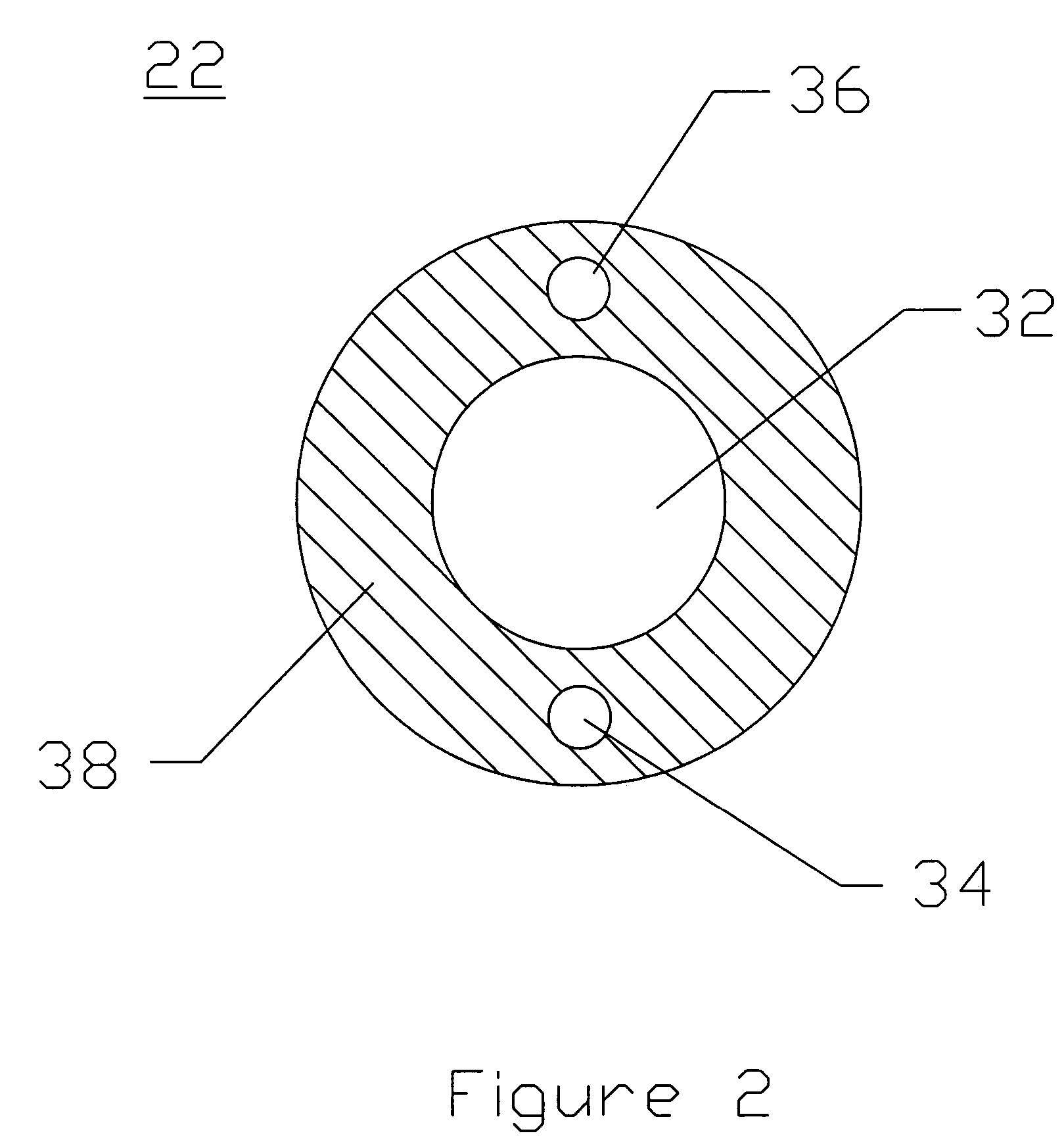Method and apparatus for chest drainage
a chest cavity and chest technology, applied in the field of general surgery, thoracic surgery, trauma and critical care, can solve the problems of compromising drainage, internal organ damage, and iatrogenic trauma risk of patients, so as to reduce steps, minimize trauma, and reduce errors
- Summary
- Abstract
- Description
- Claims
- Application Information
AI Technical Summary
Benefits of technology
Problems solved by technology
Method used
Image
Examples
Embodiment Construction
[0031]FIG. 1 illustrates a cannula, tube or catheter 10 of the present invention. The catheter 10 comprises a manifold or hub 12, a bidirectional or two-way valve or seal 14. an extracorporeal fixation device 16, an intracorporeal fixation device 18, a plurality of drainage holes 20, and a length of multi-lumen tubing 22. In addition, the catheter 10 optionally comprises a valve housing 15. The manifold 12 comprises a drainage adapter or fitting 24, a valve-enabling adapter or fitting 26, and an intracorporeal fixation-enabling adapter or fitting 28. In this preferred embodiment, the intracorporeal fixation device 18 is a balloon, and the intracorporeal fixation-enabling adapter 28 is a balloon inflation adapter or fitting. The multi-lumen tubing preferably comprises a stiffening wire 30.
[0032]FIG. 2 illustrates a cross-section of the multi-lumen tubing 22. The multi-lumen tubing 22 comprises a drainage lumen 32, a valve enabling lumen 34, an intracorporeal fixation-enabling lumen 3...
PUM
 Login to View More
Login to View More Abstract
Description
Claims
Application Information
 Login to View More
Login to View More - R&D
- Intellectual Property
- Life Sciences
- Materials
- Tech Scout
- Unparalleled Data Quality
- Higher Quality Content
- 60% Fewer Hallucinations
Browse by: Latest US Patents, China's latest patents, Technical Efficacy Thesaurus, Application Domain, Technology Topic, Popular Technical Reports.
© 2025 PatSnap. All rights reserved.Legal|Privacy policy|Modern Slavery Act Transparency Statement|Sitemap|About US| Contact US: help@patsnap.com



